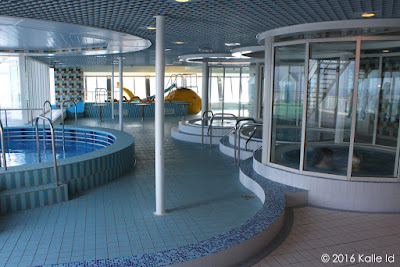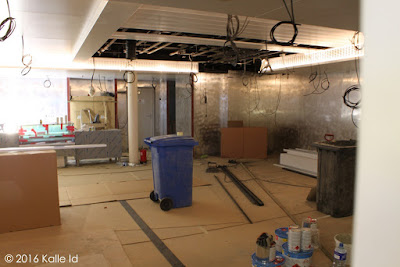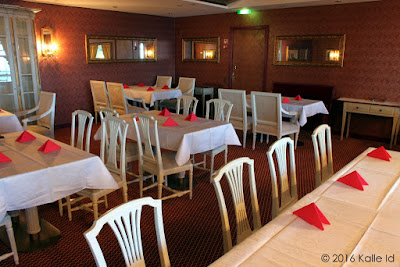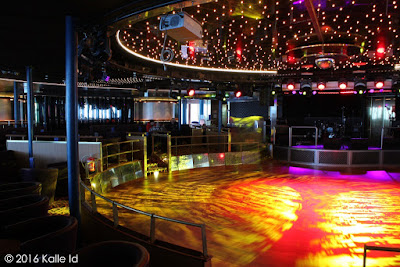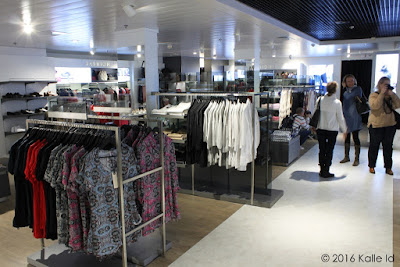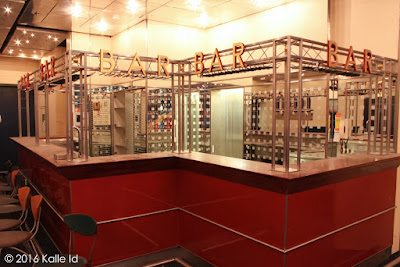IMO 9354284
Built 2008, Aker Yards, France / Aker Yards, Helsinki, Finland
Tonnage 48 915 GT
Length 212,10 m
Width 29,00 m
Draugth 6,42 m
Ice class 1A Super
2 800 passengers
2 484 berths
600 cars
1 130 lanemetres
4 Wärtsilä diesels, combined 32 000 kW
2 propellers
2 bow thrusters
Speed 24,5 knots
When looking at photos I had taken during last year, I realised that I had not posted a single image of the Baltic Princess with the Silja Line hull markings where you could actually see her livery properly (the only Silja-coloured images are night time-shots). And I haven't put up an updated version of her history since she transferred under the Silja brand. So here goes:
The Baltic Princess is, of course, the second ship in Tallink's Galaxy-class (the name always makes me think about Star Trek; the Enterprise in Star Trek: The Next Generation was a Galaxy-class ship). Her sisters are the Galaxy and the Baltic Queen. While the other two ships were built at Aker Yards' Rauma shipyard, the Baltic Princess was built in Helsinki, during the brief time in the mid-00s when the yard specialized in ferries (though a part of the ship's hull was built in France and towed to Helsinki and the rest of the ship was built around the French-built part in here).
While the Galaxy had been built for a 22-knot top speed, the Baltic Princess was given slightly more powerful engines, yielding 24,5 knots. This lended cause to much speculation about the ship's eventual route while she was under construction: the higher speed was said to make the ship suitable for a Stockholm-St. Petersburg cruiseferry service, or (after Tallink took over Silja Line in 2006) for the Turku-Stockholm service where harbour turnaround times are short and catching up delays is often difficult. I recently learned the change was simply because the older engine variant used in the Galaxy was no longer manufactured. In the end the Baltic Princess was placed on the Helsinki-Tallinn 22-hour cruise service when she was completed in summer 2008 (a service where her high speed is of absolutely no use). She replaced the Galaxy, which in turn transferred to the Silja Line fleet and was placed on the Turku-Stockholm route.
During her carreer with Tallink, Baltic Princess remained on the same service almost without deviation. In July 2009 she made a charter cruise from Helsinki to Pori (via Mariehamn), coinciding with a music festival in Pori, and as well as occasional summer cruises from Helsinki via Tallinn to Visby during the summer months of 2011 and 2012.
In early 2013, the Baltic Princess moved to Silja Line's Turku-Stockholm -route, swapping services with the Silja Europa. The reasons were twofold: one, the Baltic Princess, as a newer ship, could better compete with Viking Line's new Viking Grace, and two, the Silja Europa suffered from persistent engine problems. Thus, the Baltic Princess was repainted with Silja Line hull markings (but otherwise retained her Tallink-era livery, complete with a www.tallink.com text on her hull) and joined the Galaxy on the Turku route. It is perhaps of interest to note that this was the first time since 1993 that Silja Line had a pair of identical sisters on that service.
Since 2013, the Baltic Princess has remained on the same service. Ironically, she seems to be suffering fairly often from engine trouble, even though she was brought in to replace the Silja Europa to get rid of the engine trouble.
The photographs below show the Baltic Princess departing Mariehamn on the afternoon of 30 October 2015, photographed from onboard the Viking Grace. As per the usual, click on the images to see them in larger size.
 |
| Rush hour in Mariehamn: the Baltic Princess and Galaxy depart to make space for the Amorella and Viking Grace. |
 |
| No, of course I didn't spend a stupidly long time fiddling with the layers to get the lighting just right. |












